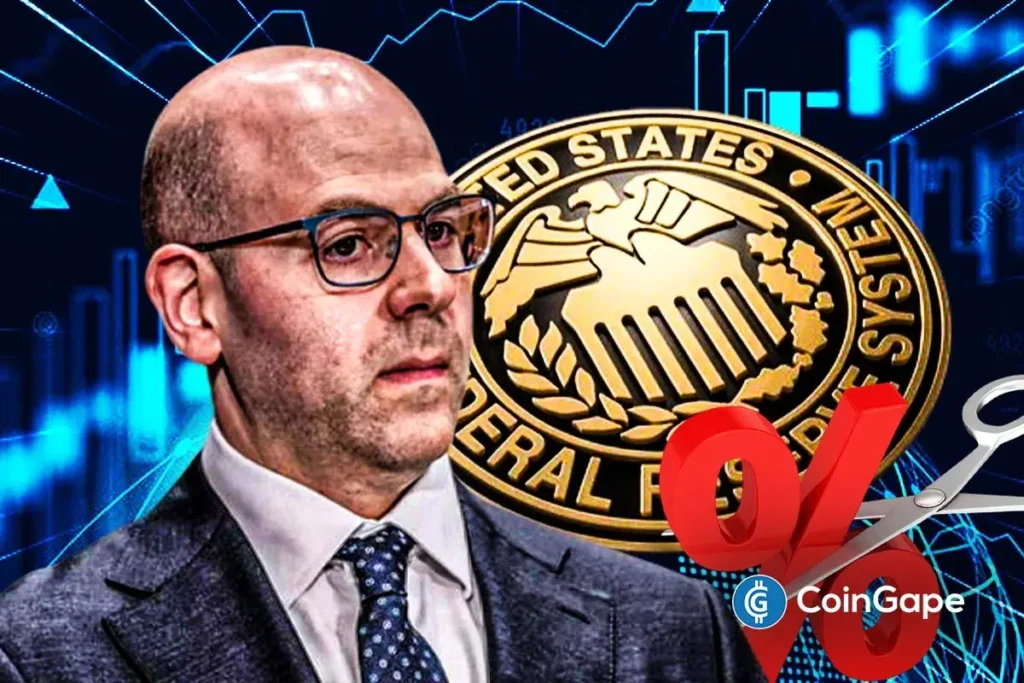Federal Reserve Governor Stephen Miran Advocates for Aggressive Rate Cuts Amid Inflation Concerns
In recent discussions surrounding U.S. monetary policy, Federal Reserve Governor Stephen Miran has emerged as a prominent advocate for aggressive interest rate cuts, expressing a surprisingly optimistic view on inflation amid a landscape of differing opinions among his colleagues. As inflation remains a hot topic, Miran stands out by suggesting that the current outlook is more favorable than many believe. This divergence in viewpoints may have significant implications for upcoming Federal Open Market Committee (FOMC) meetings and the broader financial market, including cryptocurrencies.
Miran’s Positive Inflation Outlook
Speaking at the MFA Policy Outlook, Miran emphasized his belief that inflation is not a pressing concern and advocated for a more proactive approach to monetary policy. He suggested that the Fed should adopt a forward-looking stance, indicating that recent data does not support fears of rising inflation. Miran’s belief that inflation will not accelerate underscores his call for a series of 50 basis points (bps) rate cuts to bring the policy rate closer to neutral. This perspective challenges the views of several Fed officials who remain wary of inflation pressures, particularly those stemming from tariffs imposed during the Trump administration.
Support for Aggressive Rate Cuts
Miran’s argument for aggressive rate cuts is grounded in his analysis of the current economic climate. He believes that the labor market presents more downside risks than inflation does, making a case for recalibration of the Fed’s interest rates. His recommended neutral rate stands at 0.5%, reinforcing his stance that a significant reduction in rates may help stimulate economic growth. Moreover, he has voiced concerns about the potential risks posed by an overly restrictive monetary policy, urging his colleagues to consider the economic implications of maintaining high rates.
Division Among Fed Officials
However, Miran’s optimistic stance contrasts sharply with other Federal Reserve officials who express caution regarding inflation. Figures like Fed Chair Jerome Powell and Kansas City Fed President Jeffrey Schmid have articulated concerns about inflation remaining elevated, suggesting a more conservative approach to rate cuts. This division among Fed officials indicates that any future monetary policy changes will likely be subject to intense debate, particularly as the committee prepares for its upcoming meetings.
Market Sentiment and Future Expectations
Despite the mixed signals from Fed officials, market sentiment appears to lean toward expecting further rate cuts. Current pricing indicates a staggering 94.6% probability of a 25 basis point cut at the upcoming October FOMC meeting. This anticipation of lower rates has resonated throughout various financial markets, most notably in the cryptocurrency space. Bitcoin, for instance, has recently surged to an all-time high (ATH) above $126,000, reflecting investor confidence that rate cuts could inject liquidity into the market.
Upcoming Insights from September FOMC Minutes
As the Fed prepares to release the minutes from the September FOMC meeting, many anticipate further clarity on the committee’s stance regarding interest rates and inflation concerns. Insights from these minutes will shed light on individual members’ views and their voting tendencies, offering a more comprehensive understanding of the Fed’s future direction. The decision to cut rates or maintain the status quo will undoubtedly have lasting implications for both the economy and financial markets.
Conclusion
In summary, Governor Stephen Miran’s push for aggressive Fed rate cuts amid a favorable inflation outlook represents a significant narrative within the broader discussion surrounding U.S. monetary policy. While his views stand in contrast to those of several colleagues, the market seems to remain optimistic about potential rate cuts. With the upcoming FOMC meeting and the release of key minutes on the horizon, stakeholders will be keenly watching for indications of the Fed’s next moves and their implications for economic growth and market dynamics.


